Coagulation:- part 5 – INR (International Normalized Ratio), PT and PTT
INR
Sample for INR
- This sample is just like for PTT or APTT.
- The blood sample is taken with an ESR (sodium citrate) solution.
- Mix blood 1.8 ml with ESR solution 0.2 ml.
Indications for INR
- PT and PTT are advised to find the cause of unexplained bleeding or blood clot formation.
- INR is advised to monitor the blood thinning drug’s medication, like warfarin therapy.
- This is done for routine health screenings.
- To evaluate whether the medical condition is improving or worsening.
- To assess and measure the success or failure of a medication or treatment plan.
- This measures the extrinsic pathway.
Precautions for INR and PT:
- A high-fat diet may decrease the PT.
- Alcohol use may increase the PT value.
- There are certain drugs that may increase the PT value are:
- Barbiturates.
- Amonosalicylic acid.
- Allopurinol.
- Beta-lactam antibiotics.
- Chloramphenicol.
- Cephalothins.
- Cimetidine.
- Clofibrate.
- Alcohol.
- Neomycin.
- There are certain drugs that can decrease the PT value are following:
- Anabolic steroids.
- Digitalis.
- Benadryl (Diphenhydramine).
- Oral contraceptives.
- Vitamin K.
Definition of INR
- This is the patient’s prothrombin time (PT) ratio and the normal mean PT time raised to the power of the international sensitivity index.
- INR is a measure of the sensitivity of the specific tissue factor used in the test, as compared with a World Health Organization standard (normal British brain tissue factor).
Blood coagulation process and facts
- Prothrombin (Factor II) is produced in the liver and is Vit. K dependent.
- Vit. K deficiency leads to a decreased level of Prothrombin and gives rise to a bleeding tendency.
- PT is used to evaluate the extrinsic pathway and common pathway.
The first reaction of the body to active bleeding is blood vessel constriction.
The first response to vascular injury:
- In a small vessel, the constriction may be enough to stop bleeding, while in large blood vessels, the hemostatic mechanism is involved.
The primary phase:
- The primary phase of hemostasis is platelet aggregation and activation.
- The hemostatic system forms the clot which plugs the vessel.
Secondary hemostasis:
- It will first activate the tissue factor and then the coagulation factors.
- The extrinsic pathway is activated by tissue factor and factor VII, which stimulates factor X and enters the common pathway.
- The intrinsic pathway occurs through XII, XI, IX, and VIII and enters the common pathway by activating factors X and Xa.
INR (International normalized ratio):
- INR is a simple ratio. There is no unit of INR.
- This is calculated by dividing the patient’s PT by the mean of the normal range PT.
- The international sensitivity index (ISI) is 1.3 to 1.5. The following is the formula.
Use of INR:
- The prophylaxis range of 2.0 to 3.0 is used to prevent:
- Embolism.
- Venous thrombosis.
- Pulmonary embolism.
- Myocardial infarction.
- In patients with anticoagulant therapy, the INR is maintained between 2 and 3.
- A raised range from 2.5 to 3.5 is used in the patient with mechanical heart valves.
What is a Normal INR
- The INR test result is given as a number.
- INR = 1 represents equal to normal clotting time.
- INR = 2 represents twice the normal clotting time.
- Normal range value =0.8 to 1.1
- INR is used in oral anticoagulants:
- For prophylaxis = 1.3
- All other indications except cardiac = 2.0 to 3.0.
- In cardiac diseases = 2.5 to 3.5.
The required range of INR in various diseases :
| Disease | Required range |
| Deep vein thrombosis (DVT) | 2.0 to 3.0 |
| DVT patient on warfarin treatment | 2.0 to 3.0 |
| DVT prophylaxis | 1.5 to 2.0 |
| Atrial fibrillation | 2.0 to 3.0 |
| Pulmonary embolism | 2.5 to 3.5 |
| Orthopedic surgery | 2.0 to 3.0 |
| Prosthetic valve prophylaxis | 3.0 to 4.0 |
| Prevention of embolus in a patient with atrial fibrillation | 2 to 3 |
PT values in various diseases:
| Clinical condition | PT |
| Factor VIII deficiency | Normal |
| Factor XI deficiency | Normal |
| Factor XII deficiency | Normal |
| Factor II deficiency | Prolonged |
| Factor V deficiency | Prolonged |
| Factor VII deficiency | Prolonged |
| Factor X deficiency | Prolonged |
| Heparin therapy | Prolonged |
| Vit. K deficiency | Prolonged |
| Liver diseases | Prolonged |
| Coumarin therapy | Prolonged |
Warfarin therapy is given in:
- Deep vein thrombosis
- Atrial fibrillation.
- Pulmonary embolism.
- Replacement of the artificial valves.
- Some cases of heart failure.
- Care during the Warfarin therapy:
- Teach the patient to check the PT and INR values regularly.
- Teach the patient to evaluate the bleeding tendency, like bruises, petechiae, and gum bleeding.
- The patient may have back pain.
- Blood will be positive in urine and stool.
- Teach the patient about the interaction of other medications, so they should take them with the permission of their physician.
High INR or Critical value and be Careful when INR = >5.5
- Please, for more information, see PT and PTT.
Questions and answers:
Question 1: What should be INR in deep vein thrombosis (DVT)?
Question 2: What is the effect of alcohol on INR?

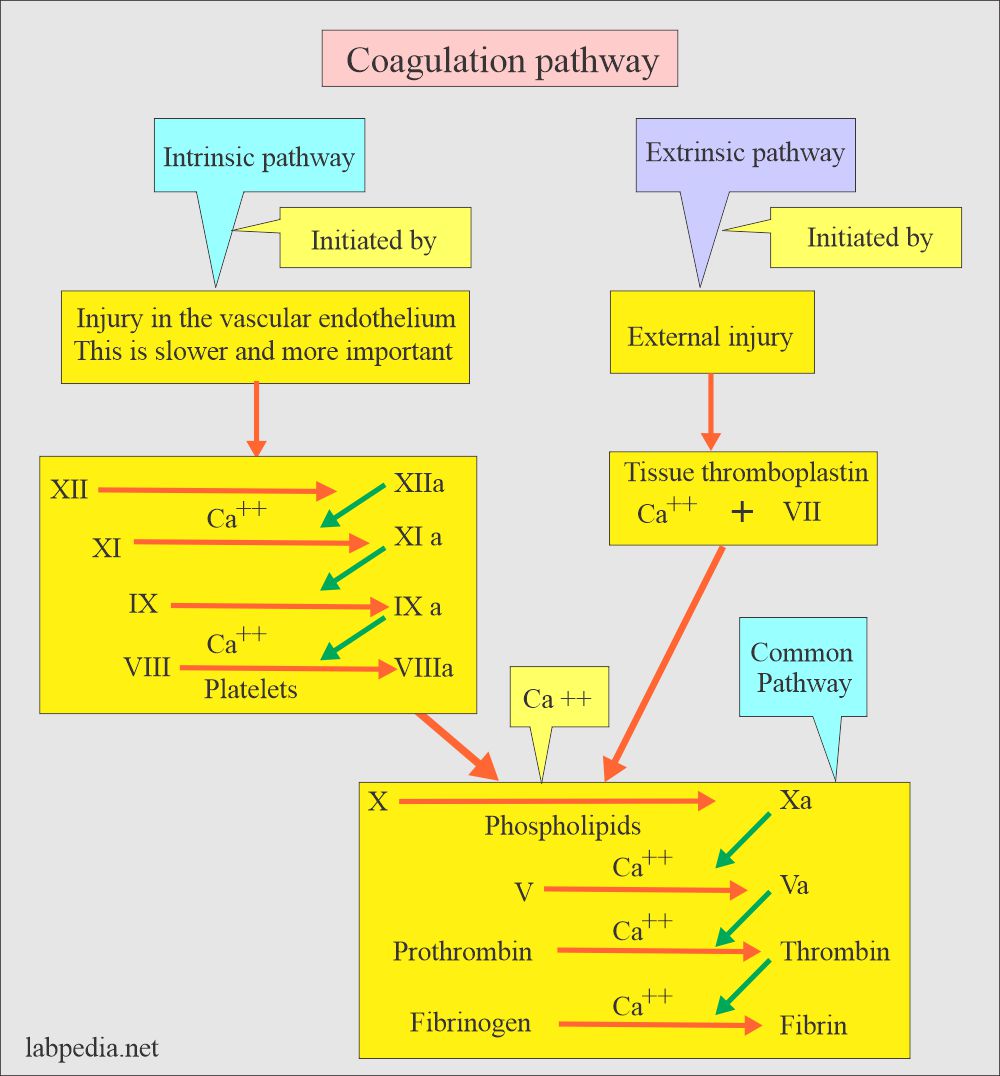
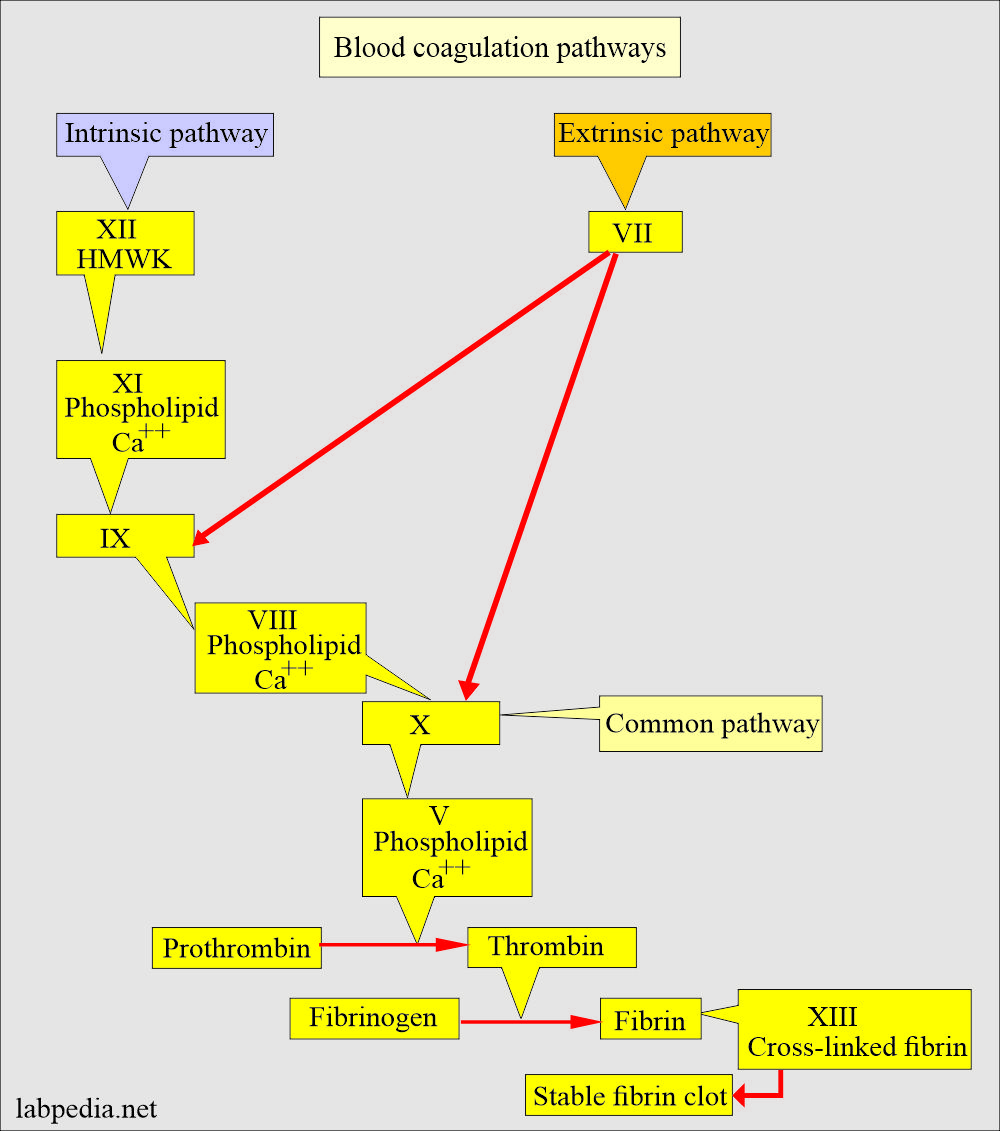
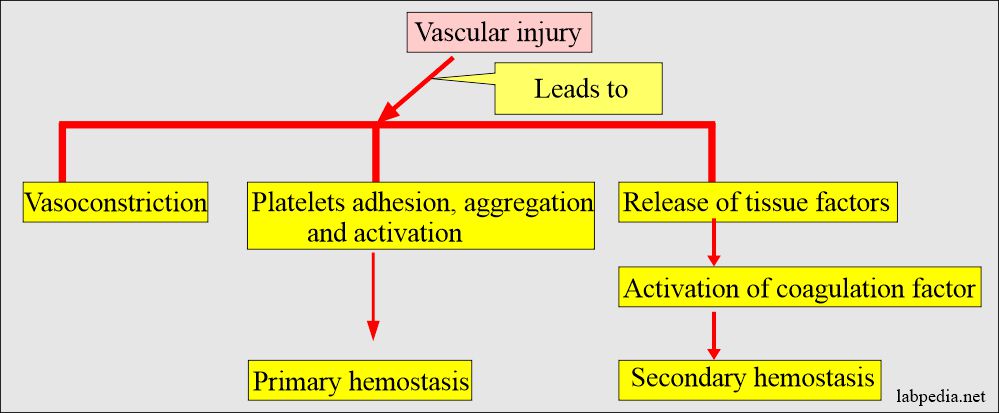
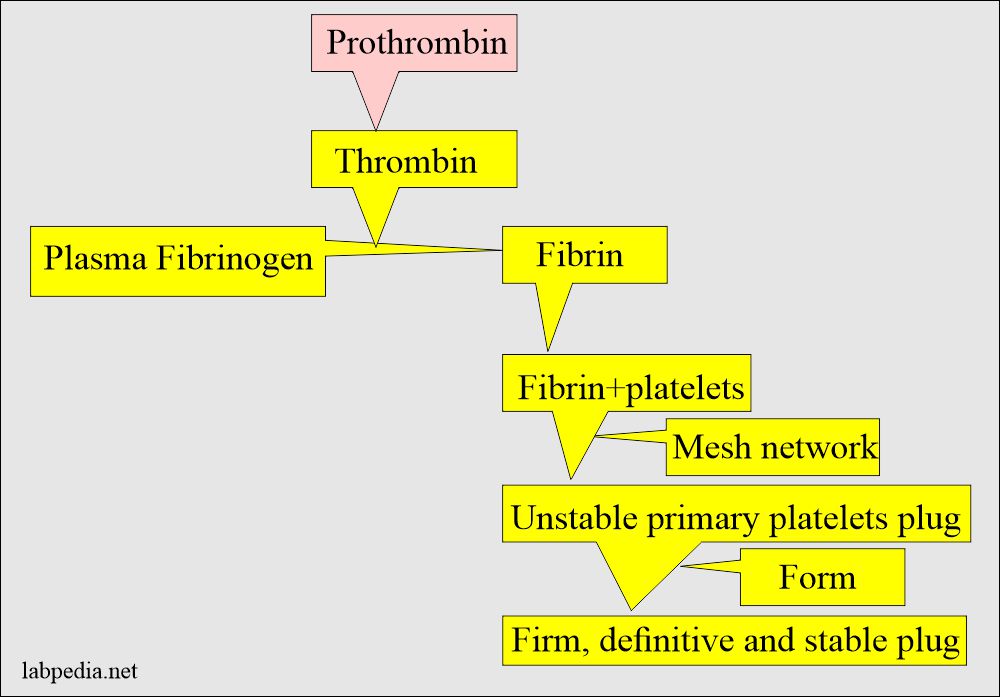
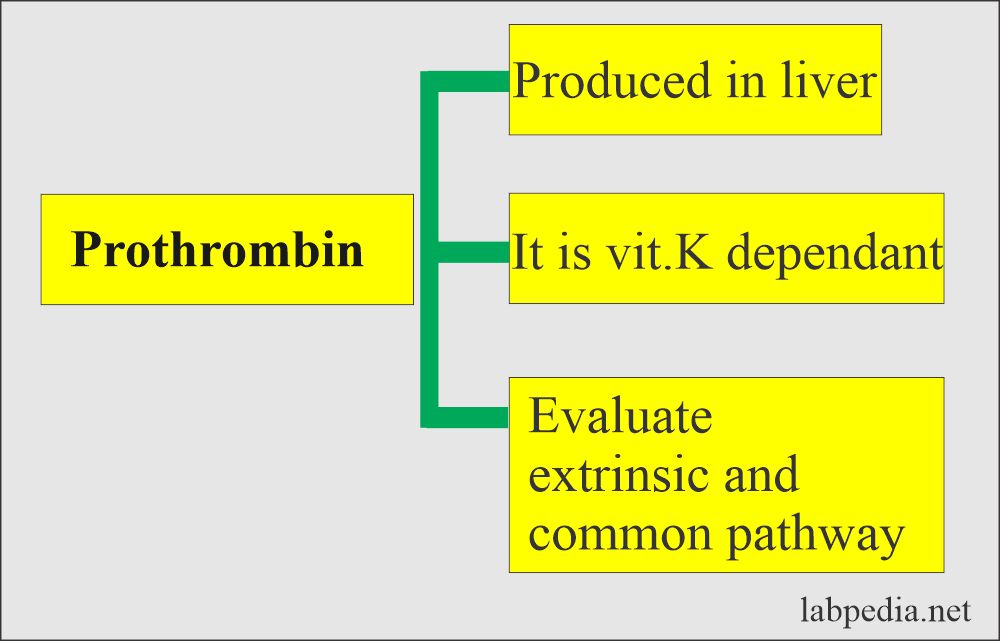
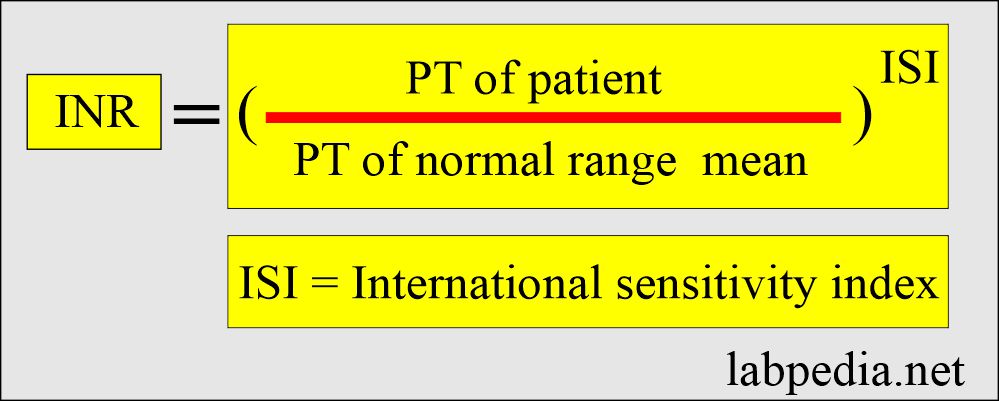

Thanks for the comprehensive explanation.